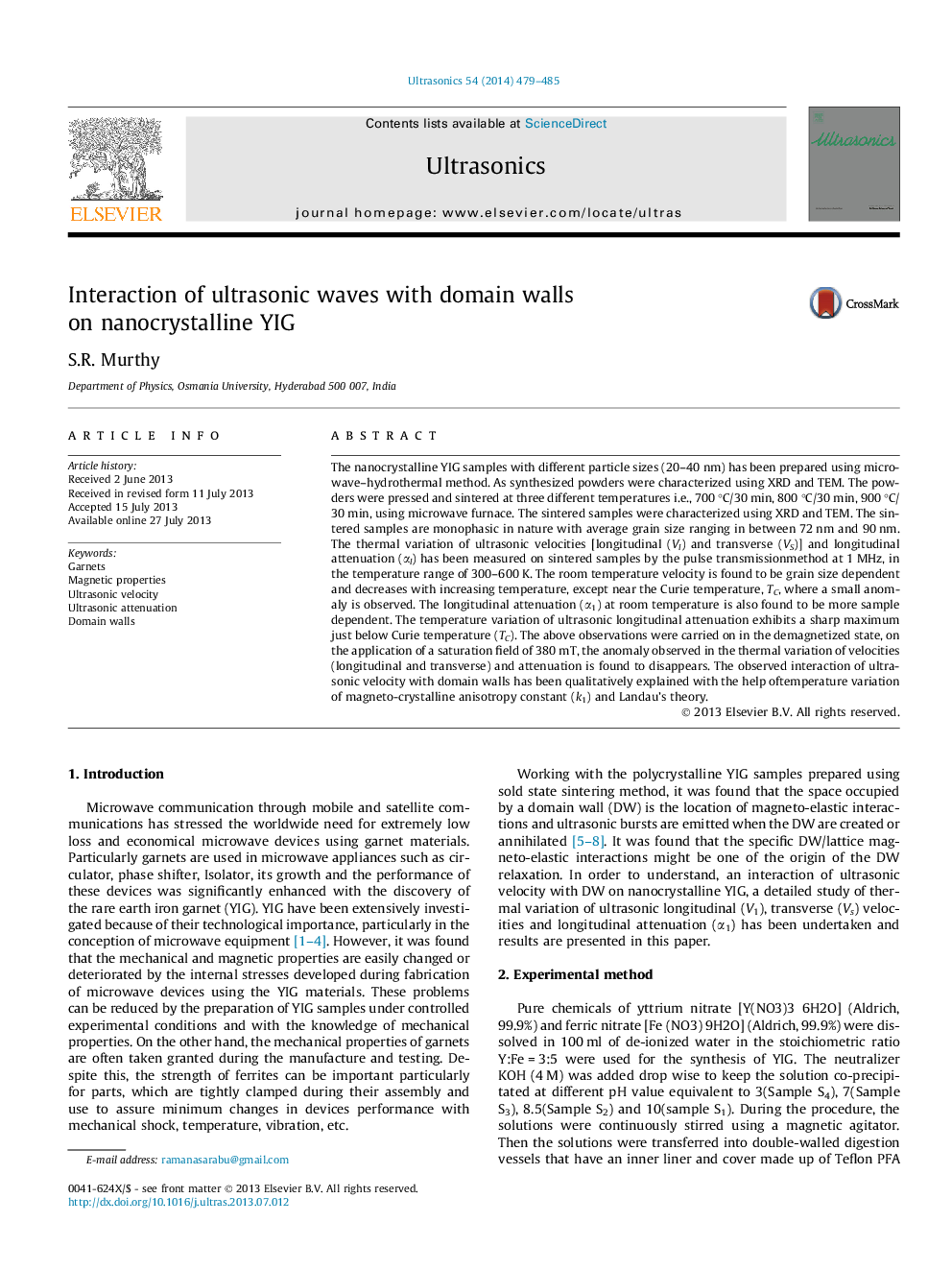| Article ID | Journal | Published Year | Pages | File Type |
|---|---|---|---|---|
| 10690483 | Ultrasonics | 2014 | 7 Pages |
Abstract
The nanocrystalline YIG samples with different particle sizes (20-40 nm) has been prepared using microwave-hydrothermal method. As synthesized powders were characterized using XRD and TEM. The powders were pressed and sintered at three different temperatures i.e., 700 °C/30 min, 800 °C/30 min, 900 °C/30 min, using microwave furnace. The sintered samples were characterized using XRD and TEM. The sintered samples are monophasic in nature with average grain size ranging in between 72 nm and 90 nm. The thermal variation of ultrasonic velocities [longitudinal (Vl) and transverse (VS)] and longitudinal attenuation (αl) has been measured on sintered samples by the pulse transmissionmethod at 1 MHz, in the temperature range of 300-600 K. The room temperature velocity is found to be grain size dependent and decreases with increasing temperature, except near the Curie temperature, TC, where a small anomaly is observed. The longitudinal attenuation (α1) at room temperature is also found to be more sample dependent. The temperature variation of ultrasonic longitudinal attenuation exhibits a sharp maximum just below Curie temperature (TC). The above observations were carried on in the demagnetized state, on the application of a saturation field of 380 mT, the anomaly observed in the thermal variation of velocities (longitudinal and transverse) and attenuation is found to disappears. The observed interaction of ultrasonic velocity with domain walls has been qualitatively explained with the help oftemperature variation of magneto-crystalline anisotropy constant (k1) and Landau's theory.
Related Topics
Physical Sciences and Engineering
Physics and Astronomy
Acoustics and Ultrasonics
Authors
S.R. Murthy,
